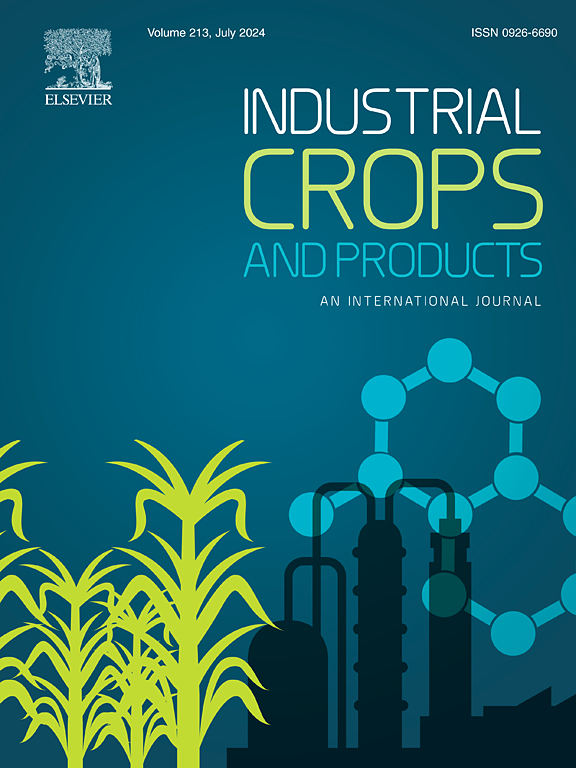Comprehensive plastome analysis in prickly pear cactus (Opuntia, Cactaceae), a key genus for sustainable fuel and food: Uncovering evolutionary dynamics and germplasm
IF 5.6
1区 农林科学
Q1 AGRICULTURAL ENGINEERING
引用次数: 0
Abstract
Opuntia, a genus in Cactaceae, holds considerable economic significance due to its diverse uses. However, species identification and understanding of phylogenetic relationships within this genus are challenging, given the extensive morphological variation and frequent hybridization. This study analyzed plastomes from 40 Opuntia and 32 additional species within Cactaceae, focusing on plastome structure, gene content, and evolutionary dynamics. Our findings reveal significant structural variations and changes in gene content across Opuntia plastomes, with sizes ranging from 121,985 bp to 152,717 bp. These variations are primarily driven by the contraction and expansion of Inverted Repeat (IR) regions, which range from 338 to 30,530 bp. We identified 101 species-specific SSRs across the Opuntia plastomes, along with six high-resolution plastid markers (ndhJ-trnF, atpE-trnM-CAU, psaJ-rpl33, ndhC-rbcL, psaA-ycf3, atpB-rbcL), which offer potential tools for accurate germplasm identification. Our phylogenomic framework within Cactaceae traced the ancestral IR states of Opuntia through divergence time and ancestral trait reconstruction, which suggests an origin in the Late Miocene (approximately 8.54 million years ago). Initial slight IR contraction was observed, followed by diversification involving extreme contraction and expansion events. These events, potentially adaptive responses to climate changes, are proposed based on patterns of IR variation and documented climate shifts during the Late Tertiary and Quaternary periods These findings provide key molecular markers that could help resolve taxonomic challenges within the Opuntia genus and enhance our understanding of Opuntia plastome evolution. This study offers comprehensive genomic resources for this economically significant genus, laying a foundation for future species identification and breeding applications.

可持续燃料和食物关键属刺梨仙人掌(仙人掌科)的综合质体分析:揭示进化动力学和种质资源
仙人掌属,仙人掌科的一个属,由于其多种用途,具有相当大的经济意义。然而,鉴于广泛的形态变化和频繁的杂交,该属的物种鉴定和系统发育关系的理解具有挑战性。本研究分析了仙人掌科40种仙人掌属植物和32种仙人掌科植物的质体结构、基因含量和进化动态。我们的研究结果揭示了在整个Opuntia质体中显著的结构变化和基因含量的变化,其大小范围从121,985 bp到152,717 bp。这些变化主要是由倒置重复序列(IR)区域的收缩和扩张驱动的,其范围从338到30,530 bp。我们鉴定出了101个种特异性SSRs,以及6个高分辨率质体标记(ndhJ-trnF、atpE-trnM-CAU、psaJ-rpl33、ndhC-rbcL、psaA-ycf3、atpB-rbcL),为准确鉴定种质资源提供了潜在的工具。我们在仙人掌科的系统基因组框架中,通过分化时间和祖先特征重建,追溯了其祖先IR状态,表明其起源于晚中新世(约854万年前)。最初观察到轻微的IR收缩,随后是包括极端收缩和扩张事件的多样化。这些事件可能是对气候变化的适应性响应,基于晚第三纪和第四纪的IR变化模式和记录的气候变化,这些发现提供了关键的分子标记,可以帮助解决机会属的分类挑战,并增强我们对机会属质体进化的理解。本研究为这一具有重要经济意义的属提供了全面的基因组资源,为今后的物种鉴定和育种应用奠定了基础。
本文章由计算机程序翻译,如有差异,请以英文原文为准。
求助全文
约1分钟内获得全文
求助全文
来源期刊

Industrial Crops and Products
农林科学-农业工程
CiteScore
9.50
自引率
8.50%
发文量
1518
审稿时长
43 days
期刊介绍:
Industrial Crops and Products is an International Journal publishing academic and industrial research on industrial (defined as non-food/non-feed) crops and products. Papers concern both crop-oriented and bio-based materials from crops-oriented research, and should be of interest to an international audience, hypothesis driven, and where comparisons are made statistics performed.
 求助内容:
求助内容: 应助结果提醒方式:
应助结果提醒方式:


